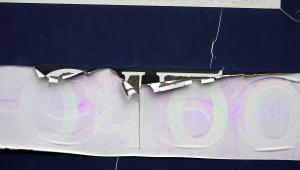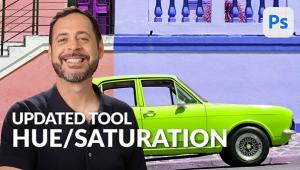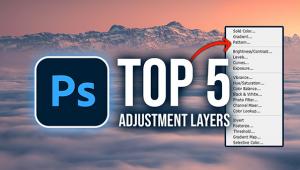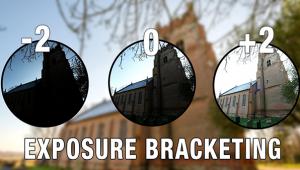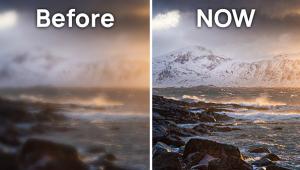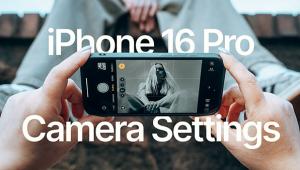The LGE FLATRON L2000C LCD Display & Apple Mac mini Intel Core Duo Computer; My Excellent Adventure In Photo Computing Page 2
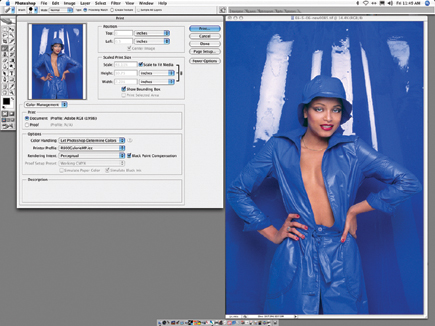 |
|
|
Now On To The Mac mini
With the display adjusted and profiled, I could now move on to some image processing
and editing work to see how the Mac mini Intel's performance handled tasks
in digital photography. Before I got fully underway I installed the latest Version
1.1 of Apple's Aperture that I had recently tested with both a Mac G5
Quad processor and my dual-processor machines. Apple has already reprogrammed
Aperture so it will run natively on the Intel processor Macs. It has also refined
the raw file format conversion and tweaked the image adjustment tools and processes,
not to mention lowered the price of Aperture $200-$299.
Because I wanted to evaluate the LGE L2000C and the Mac mini for image cleanup
and retouching, I also downloaded the latest driver for my 9x12" Wacom
Intuos3 tablet. This move revealed an unsuspected benefit as the Wacom tablet
behaved much steadier and more reliably and tracked more exactly to the screen.
I think this very noticeable improvement was due to the fact that the strong
magnetic field generated by a 21" CRT interfered somewhat with the Wacom
tablet. Without the effect of the big CRT, the LCD worked in tandem cleanly
and precisely, as it is supposed to.
I was a bit surprised how little time this setup, configuration, and installation
all took. Right off the bat I was very positively impressed by how fast and
efficiently the Mac mini's little box of goodies ran everything; it worked
much more quickly and effectively than the old Mac G4 it replaced. The only
performance hitch was the fact that with big image files opened in Photoshop
the screen took a bit longer to redraw. It was, however, not enough to really
slow my work down. I think this hitch might have been partly due to the higher
1600x1200 native resolution of the LGE L2000C, and perhaps because Adobe's
Photoshop was running in the Rosetta Emulation mode and not natively, like Apple's
Aperture 1.1.
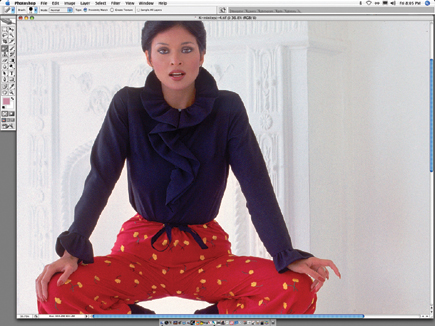 |
|
|
Most applications have yet to be updated and reprogrammed to support the Intel
Macs natively, so things can only get better. And the only incompatibility issue
that I encountered is a dubious one, discovered when working with a new scanner.
For some reason, turning on Digital ICE made everything lock up during processing.
I returned the scanner, and so far have not heard if it was in some way defective,
but the technician at the company advised me that their own driver does not
as yet support the Apple Mac Intel processor computers. However, I was using
a LaserSoft SilverFast Ai 6 driver, and LaserSoft reported no problems with
the Intel Macs, and all my other SilverFast applications like DC VLT and Pro
work fine with the Mac mini Intel.
As I continued testing, using a set of Canon EOS 5D files and color correcting,
editing, and cleaning up some 35mm Kodachrome scans, the LGE LCD's brilliance
and detail rendition aided in getting really fine, accurate work done easily
with minimum time and effort. I am sure I'll now be encouraged to scan
more of my Kodachrome slide library in particular, and I'll surely dedicate
this new Mac mini Intel system and the LGE LCD to do all of my digital camera
raw file conversion and editing.
For those of you still using a PC Windows computer, it is not just the much
lower price of this Apple Mac mini Intel that is inviting. If being able to
use familiar Windows applications is also important these new Intel Apple Macs,
like the mini, can also run Windows XP. There is a utility that supports creating
a hard drive partition and installing the full Windows OS so the Apple Mac Intel
system can be a dual boot machine, and it is a downloadable utility from Apple
called Boot Camp. It will also be an incorporated feature in the next Apple
OS, Version 10.5.
But for those who have Windows photo applications like Adobe's Photoshop
and Elements, you can get Mac versions from Adobe to run on the mini by just
requesting it from Adobe and paying a small fee for the new CD discs. Microsoft
is the only software company I know of that won't do this, so if you need
an Office suite you can run an Open Source version of Office on a Mac, and there
is NeoOffice available as a free download from www.neooffice.org
(although free, a contribution to support further development should in my opinion
be made). I'm writing this article using NeoOffice--and it works
great!
Evaluation And Recommendation
If a computer is to be used as a digital darkroom its display is key. It is
the cornerstone of the system because your image quality is only going to be
as good as what you can see on the screen. If your display cannot reproduce
the image attributes you want to achieve then you cannot see it to control the
outcome. Not everyone, me included, can afford a premium display designed and
configured for professional graphic use. From my experience setting up and working
with the LGE L2000C, it has the inherent quality and color accuracy, as well
as the adjustment range, that allows you to accurately calibrate and profile
to achieve critical print-matching performance. In addition, it has the high
resolution and distinguished definition of fine detail that supports acute image
cleanup and retouching. At a moderate price for a large, high-performance LCD
display, the LGE L2000C is an exceptionally good buy for any serious digital
photographer on a limited budget. For more information, visit http://us.lge.com/products/model/
detail/computerproducts_lcdmonitors_20inch_L2000C.jhtml.
You may also contact LG Electronics at 1000 Sylvan Ave., Englewood Cliffs, NJ
07632; (800) 243-0000.
As to the Mac, I must admit that I have been advocating Apple Macs for digital
photography computing in these pages for some time now. But I started with PCs
in the '80s and was a devoted and exclusive MS Windows user for almost
a decade until I decided I could afford my first Apple Mac. Now with the new
affordable Mac mini Intel, I'll unload my last Windows PC as soon as my
budget recovers enough to buy a fresh copy of Windows XP Pro to install in the
mini.
Like all of the Apple Macs I have used, the deal maker has been the Apple OS,
and particularly ColorSync color management that provides obviously superior
color reproduction quality. The new Mac mini Intel has proved to be equally
effective, even though it costs just a fraction of any previous Mac. Because
I do computer digital photography full-time and exclusively, I have two systems
devoted to my digital darkroom, and yet another to do all of my writing, communications,
and business computing. Considering many of you may do many other things and
limit your computing to one system, I have found Apple Macs can do most everything
to advantage. You don't have to take my word for it--let me quote
a reader who has corresponded with me for many years and just acquired his first
Apple Mac Intel computer:
Dear Friends,
With this message I officially announce my new e-mail address as of June 1,
2006.
Yes, I have switched to the "dark" side as you PC lovers would say.
I've gone MAC and with it a new e-mail account
with .MAC.
I'm going to miss those PC viruses, Viagra ads (even those Viagra ads
in Japanese and Swahili), the home mortgage ads, and those desperate pleas for
an offshore bank account, where they will stash millions with my consent.
I receive almost 100 spam e-mails a day. The madness must stop, so here it is!
*********@mac.com
See you in cyberspace.
Cheers,
John F. Patterson III
Missoula, MT
For more information about the Apple Mac mini Intel, visit the Apple Store online at: http://store.apple.com/1-800-MY-APPLE/WebObjects/AppleStore.woa/wo/0.RSLID?mco=37CDA12F&nclm=Macmini. You may also contact Apple Computer, Inc. at 1 Infinite Loop, Cupertino, CA 95014; (408) 996-1010.
- Log in or register to post comments







